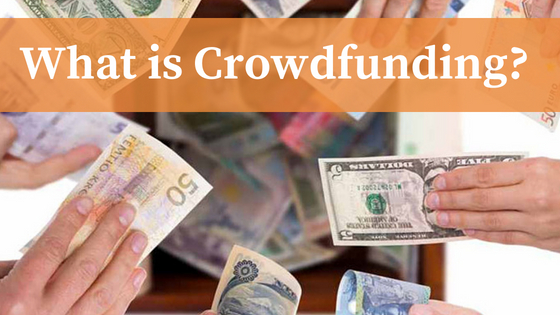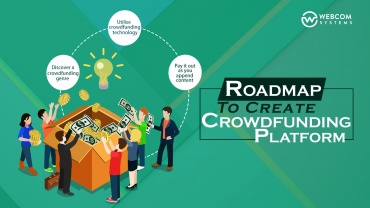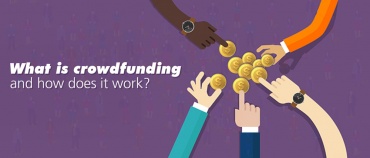What is Crowdfunding?
Crowdfunding is a method for companies, corporations, and individuals to communicate with other persons, associations, and organizations to propose a set amount of capital as a loan, donation or investment.
Some businesses may turn to crowdfunding to get significant support for a distinct project or idea.
Most frequently, crowdfunding demands that funding is raised through a set timeframe via a digital social network from person to person or organization to organization.
Why crowdfunding?
Crowdfunding – lots of people contributing small amounts of money – isn’t a novel idea.
Fast forward to present day and practising crowdfunding to create public support for an idea has matured as more mainstream.
The advantages of managing a campaign are clear; it enables you to build recognition and support, get validation for your idea, unseal grants and other funds as well as form a band of advocates for your project.
While driving a crowdfunding campaign requires time, energy and a lot of hard work, with expertise in fund management and proper execution and loads of loads of preparation and groundwork it can help you accomplish marvellous achievements.
The Pros Of Crowdfunding
Here are four ways that crowdfunding is the coolest way you can get funding (and more) for your project.
- You Get Funds Without Too many Sacrifices
- You Receive Tremendous Marketing Effect
- You Validate Your Product’s Success
- You Gain An Optimistic Customer Base
Note: Here is a detailed guide on benefits of crowdfunding. Please have a look.
Few basic kinds of crowdfunding:
#1. Reward-Based Crowdfunding:
What is it/How it works: With reward-based crowdfunding, individuals can promise money to a new imaginative art project, a unique technology product in development, or a music artist producing a new album.
The smartwatch, Pebble, given the tech industry, took note when it acquired over $2.6 million in only three days of active crowdfunding on the famous crowdfunding site, Kickstarter.
Top players: Kickstarter, Indiegogo
#2. Peer-to-Peer Lending:
What is it/How it works: Ever loan a friend or kid money? Well, novel crowdfunding platforms, allow borrowers to get access to funds outside of traditional banking channels.
And those people like to take a little risk to lend out money to other individuals can build whole loan portfolios at the click of a button. Lending Club, which is the 800-pound peer-to-peer lending gorilla, is literally granting billions of dollars every year.
Top players: LendingClub, Prosper
#3. Donation-Based Crowdfunding:
What is it/How it works: Dr Muhammad Yunus got the Nobel Prize for his achievement in microfinance. With Yunus’ Grameen Bank, rather of charity to assist the working poor, small loans are provided to local entrepreneurs to support fund things like short-term inventory.
Combine microfinance with online crowdfunding, and you get sites like Kiva.org, which has been supporting small company owners in developing markets for over a decade.
Top players: Kiva.org, GoFundMe
#4. Equity Crowdfunding:
What is it/How it works: The smallest slice of the crowdfunding pie, equity crowdfunding also holds the most potential to change the way individuals invest their money.
Equity crowdfunding allows real investments in private companies In the equity crowdfunding space, AngelList is building what many call the Android of venture capital while other firms like CircleUp and OurCrowd are more like online venture capitalists that provide investors with access to invest in startups with as little as $1000.
Top players: AngelList, CircleUp, FundersClub, OurCrowd
#5. Real estate Crowdfunding:
Entrepreneurs have identified an opportunity for crowdfunding real estate.
Each real estate crowdfunding platform seems to take a different approach. Some are crowdfunding loans to buy properties or provide mortgages to buyers of real estate. Mosaic crowdfunds solar energy projects.
Top players: Fundrise, Realty Mogul, Crowdstreet
Examples: Of the above-mentioned crowdfunding models, donation-based crowdfunding is the most pragmatic approach as of now.
Lending-based microfinance platforms like KIVA need approvals from the central bank. The Reserve Bank of India in 2011 approved Milaap, a non-profit microfinance institution to crowdfund from the overseas.
Even Crowdfunding is slowly becoming an alternative funding channel for the film industry. Film Director Pawan Kumar from Karnataka recently raised Rs 51 lakh using Facebook and other platforms.
Summing Up:
Crowdfunding is hard, and indeed a big deal needs luck. But there is a science and a method behind most successful projects. We take a purely empirical approach to your crowdfunding platform. We hope you find this useful.




